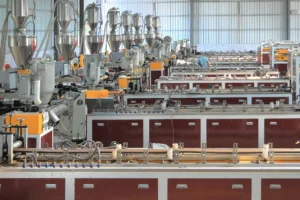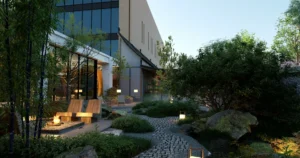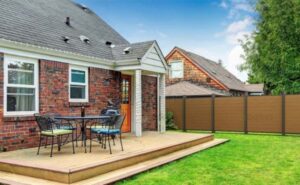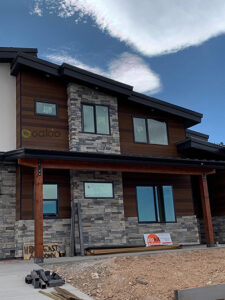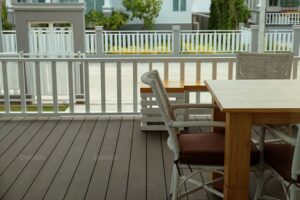Why Modified Rice Straw/PP WPC Are the Ideal Choice for Outdoor Furniture?
Modified wood-plastic composites, particularly those using rice straw and polypropylene (PP), are becoming a significant material in outdoor landscape design and furniture production. These materials offer a perfect blend of nature-inspired aesthetics with durable performance, making them ideal for urban and commercial environments.
Key Benefits of Modified Rice Straw/PP Wood-Plastic Composites
– Eco-Friendly Composition: Modified rice straw/PP composites maintain the natural look and feel of wood, while also providing superior moisture resistance and durability. By incorporating rice straw, a renewable and abundant resource, these composites help reduce the reliance on traditional wood, supporting sustainability in outdoor design.
– Exceptional Durability: The composites retain the desirable properties of wood, such as texture and appearance, while also offering enhanced resistance to environmental factors like moisture, corrosion, and insect damage. This makes them perfect for outdoor applications where traditional wood would typically degrade faster.
– UV and Aging Resistance: One of the standout features of rice straw/PP composites is their excellent UV resistance. These materials, when modified with antioxidants such as Vitamin E (Ve), can significantly extend their lifespan. Vitamin E helps prevent color fading and degradation caused by prolonged exposure to sunlight, ensuring the material looks better for longer.
– Sustainable and Cost-Effective: The incorporation of rice straw not only improves the environmental footprint but also reduces the production cost compared to traditional wood. These composites require less maintenance, which makes them more cost-effective over time.
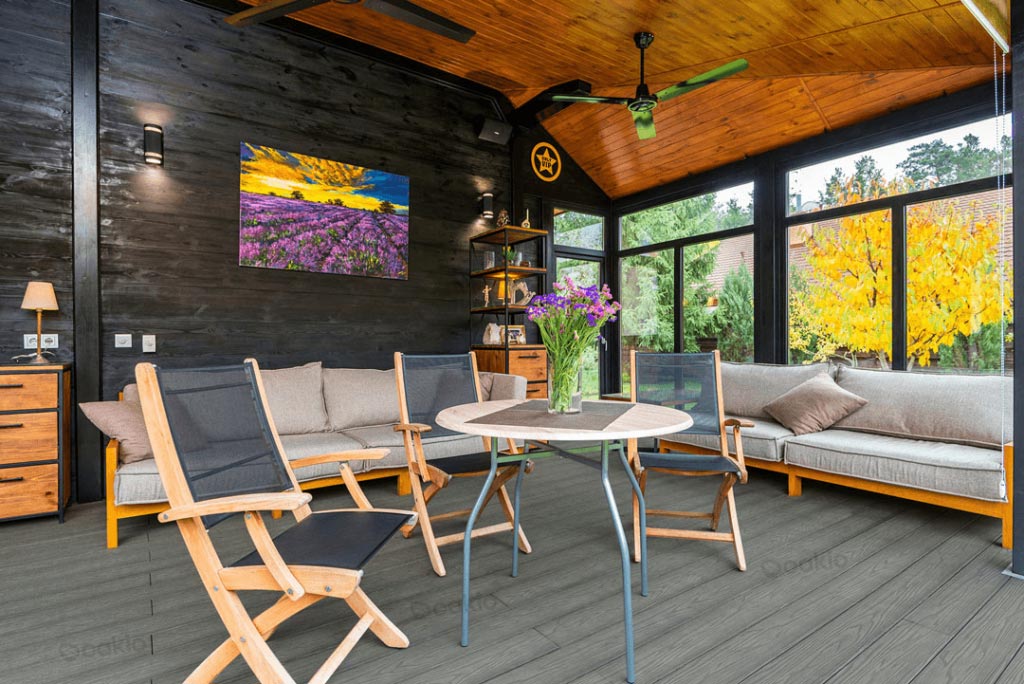
Improving the Aging Resistance: The Role of Vitamin E
A key challenge for any outdoor material is its ability to withstand aging due to UV exposure, rain, and other harsh weather conditions. Rice straw/PP composites, modified with antioxidants like Vitamin E (Ve), perform exceptionally well in this regard.
– Prolonged Durability with Vitamin E: Vitamin E acts as a natural stabilizer against UV degradation, helping to preserve the material’s physical properties. Studies have shown that when Vitamin E is added in concentrations of 0.8% and 1.2%, the composites exhibit significantly better aging resistance, with minimal changes in color and mechanical strength over time.
– Test Results: The addition of Vitamin E improves the aging performance of the composites. In accelerated aging tests (960 hours of UV exposure), samples with 0.8% and 1.2% Vitamin E maintained nearly the same bending strength and modulus, showing a high retention rate of approximately 93%. This indicates that these materials can withstand long-term exposure to outdoor conditions while maintaining their structural integrity and visual appeal.
– Reduced Maintenance Costs: The improved UV resistance not only extends the material’s lifespan but also reduces the need for frequent maintenance, making these composites an excellent investment for outdoor furniture that will endure over time.
Applications in Outdoor Furniture
The unique properties of modified rice straw/PP composites make them ideal for a wide range of outdoor furniture applications. From leisure tables and chairs to decorative elements in public spaces, these materials offer an unbeatable combination of aesthetics, durability, and sustainability.
– Urban Leisure Furniture: Composites made from rice straw and PP are increasingly used in public spaces such as parks, plazas, and recreational areas. Their resistance to weathering and UV exposure makes them suitable for year-round outdoor use. For example, in Xinghu Park, leisure furniture made from these composites has proven to be durable, even in humid and sunny environments where traditional wood furniture would quickly degrade due to rot, mold, or insect damage.
– Design Flexibility: These composites can be easily processed, cut, nailed, and bonded with other materials such as plastics and metals, allowing for greater design flexibility. Whether for benches, tables, or intricate designs, these materials can be customized to fit a variety of outdoor styles while maintaining strength and resilience.
– Maintenance-Friendly: One of the greatest advantages of using modified rice straw/PP composites for outdoor furniture is the minimal maintenance required. Unlike traditional wood, which requires regular sealing, staining, or varnishing, these composites remain stable in extreme weather conditions without losing their appearance or functionality.
Outdoor Trash Bins: A Sustainable Solution
Outdoor trash bins play an essential role in urban and recreational spaces, but their durability and maintenance often present challenges. Modified rice straw/PP wood-plastic composites offer a strong solution to these challenges.
– Durability and Weather Resistance: Trash bins made from these composites are resistant to corrosion, high temperatures, and UV degradation. This ensures that the bins can withstand long-term exposure to the elements without deteriorating, maintaining their structural integrity even in harsh conditions.
– Functional and Aesthetic Design: In addition to their practicality, these bins can be designed to complement the surrounding environment. The material’s versatility allows for creative designs that blend seamlessly with green spaces, enhancing the aesthetics of parks, streets, and other public areas.
– Extended Life Cycle: The addition of Vitamin E (Ve) in the material helps reduce the effects of UV radiation and prevent fading, ensuring that the bins retain their color and strength over time. This makes them a low-maintenance solution that benefits both the environment and the community.
Why Choose Modified Rice Straw/PP Composites?
The growing popularity of modified rice straw/PP composites is a testament to their versatile properties and wide range of applications. Here are the key reasons why they are becoming the material of choice for outdoor furniture and landscape elements:
– Sustainability: Reduces the need for virgin wood, making it a more eco-friendly choice while also supporting waste reduction through the use of agricultural byproducts like rice straw.
– Long-Term Cost Savings: The durability and low maintenance needs of these materials lead to significant savings over time. Whether for outdoor furniture, trash bins, or other landscape elements, these composites offer long-lasting performance and lower upkeep costs.
– Aesthetic Appeal: Combining the warmth and texture of wood with the durability of plastic, these composites deliver the best of both worlds. Their ability to retain color and resist aging makes them ideal for outdoor settings, where appearance matters just as much as functionality.
– Wide Application: Whether for leisure furniture in parks, public seating, or landscaping features, modified rice straw/PP composites can be used in a variety of outdoor spaces. Their versatility and resistance to environmental factors make them ideal for modern urban designs and eco-conscious projects.
Modified rice straw/PP wood-plastic composites are a game-changer in outdoor furniture and landscaping. Their sustainability, enhanced durability, and low maintenance needs make them a smart choice for any modern outdoor space. By combining the best properties of wood and plastic, these materials offer a sustainable, cost-effective solution for both private and public outdoor furniture, improving both the environment and the aesthetic quality of spaces.
Trending Reading
What Are the Differences Between the WPC Board and PVC Board?
[2024 Update] How Long Does WPC Decking Last?

